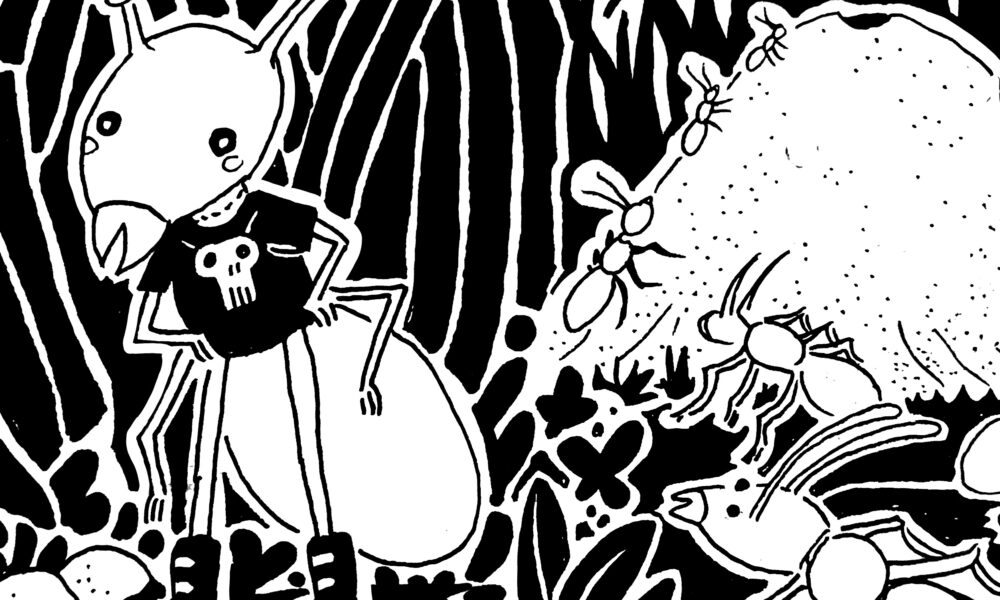On Feb. 29, McGill’s Department of Biology hosted a lecture on ant societies, led by Daniel Kronauer, an associate professor at Rockefeller University and a leading researcher in the field of ant evolution, genetics, and neuroscience.
“In my lab […] we try to understand how ant societies have evolved, how they are organized, and how they function,” Kronauer said in his lecture.
To study ant societies, Kronauer’s lab breaks their research down into three major components: How the ants differentiate into different classes, such as workers and queens; how they communicate with each other; and how that communication leads to collective behavior, such as evacuating a dangerous area or exploiting a food source.
Kronauer focused on communication in his lecture, discussing how ants use insulin controls, fluid exchange, and pheromone sensing to send signals and coordinate their actions effectively.
First, he discussed insulin signaling, which is used in ants and other animals, including humans, to regulate chemical processes. The researchers knew that when an ant colony had young larvae, the adult worker ants had lower insulin levels than when they were in the egg-laying process, called the reproductive stage. The insulin levels in turn controlled worker behavior, such as foraging for food or laying more eggs.
But how exactly the insulin levels were controlled was a mystery. To investigate this, Kronauer’s lab removed larvae from one colony and inserted them into another.
“When you do that, what happens is quite dramatic,” Kronauer explained. “The larvae really regulate the insulin levels of the adults, so when you take the larvae out, insulin levels increased pretty rapidly, and if you add larvae to a colony in the reproductive phase that really suppresses it.”
Yet the question remained: How were the larvae regulating the insulin levels of the adults?
One possible answer lies in another communication method used by ants, fluid exchange.
This insight came from another experiment conducted by Kronauer’s lab, which involved separating the ants by developmental stage, so the pupae, larvae, and adult workers were all placed in separate enclosures. This allowed them to study each developmental state closely and in isolation.
“People have been regarding pupae as a more boring, passive state,” Kronauer explained. “But when [another researcher at the lab] started to isolate the pupae, she found that in the last week of metamorphosis, they started to secrete copious amounts of this clear liquid.”
Getting curious about this process, the researcher injected food dye into some pupae and placed them in an enclosure with adult ants. They found that the dye soon transferred to the adult ants, meaning that the ants must have been eating the liquid secreted by the pupae. Further, the adult worker ants would place young larvae on the pupae so that they could eat the liquid as well, providing a source of sustenance.
While this appears to be an important food source for the larvae and adults, it also seems to play a social role.
“The secretion is a pretty complex fluid. So there’s a lot of interactive substances in there, there’s a lot of hormones in there,” Kronauer said. “So we think that it probably has a lot of important effects on both larvae development and also adult behavior.”
Finally, Kronauer looked at ants’ remarkable olfactory system, which has developed to perceive a wide variety of pheromones.
“When you look at ants, you’ll see that they are really just small walking chemical factories,” Kronauer noted. “So every worker species has about a dozen or so exocrine glands, which produce different types of pheromones.”
This impressive production of pheromones requires a large array of odorant receptors, about an order of magnitude larger than those found in fruit flies. Studying the neurobiology of this system is incredibly difficult and requires precise genetic testing. Kronauer’s lab made headlines by using CRISPR to create the first genetically altered ants.
What they found was striking: In ants where pheromone sensing had been interrupted, their behavior became completely asocial, failing to participate in collective behaviors and struggling to survive in the colony.








